16.00 Uhr
Neujahrskonzert
Explore the interior of our house and the architectural features of the six halls.
Let your gaze wander here from the foot of the Grand Staircase to Apollo, the god of the arts, in his chariot and learn more about our beautiful facade!
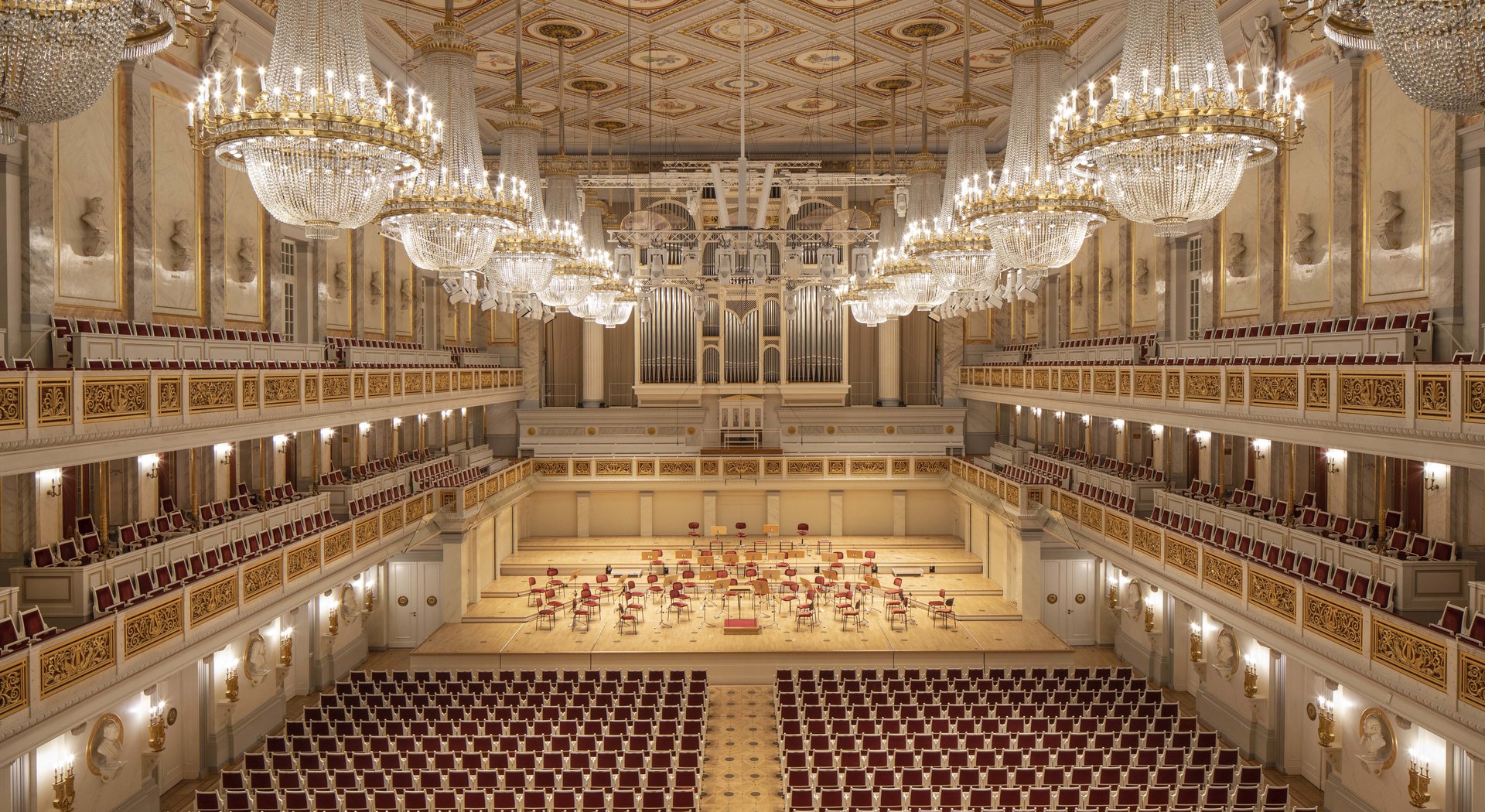
Detailed decorations in gold and red, 14 chandeliers, a magnificently decorated ceiling and almost 1700 seats - this is our great hall. With its rectangular shape, it belongs to the category of concert hall colloquially known as a "shoe box". Acoustically, it is one of the best in the world: the reverberation time is only slightly above the values considered optimal by room acousticians.
14 sparkling chandeliers bathe the Great Hall in the right light. Each one is individually adjustable and has 48 light bulbs. The chandeliers, weighing 540 kilograms, are anchored in the so-called crown floor directly above the ceiling of the Great Hall.
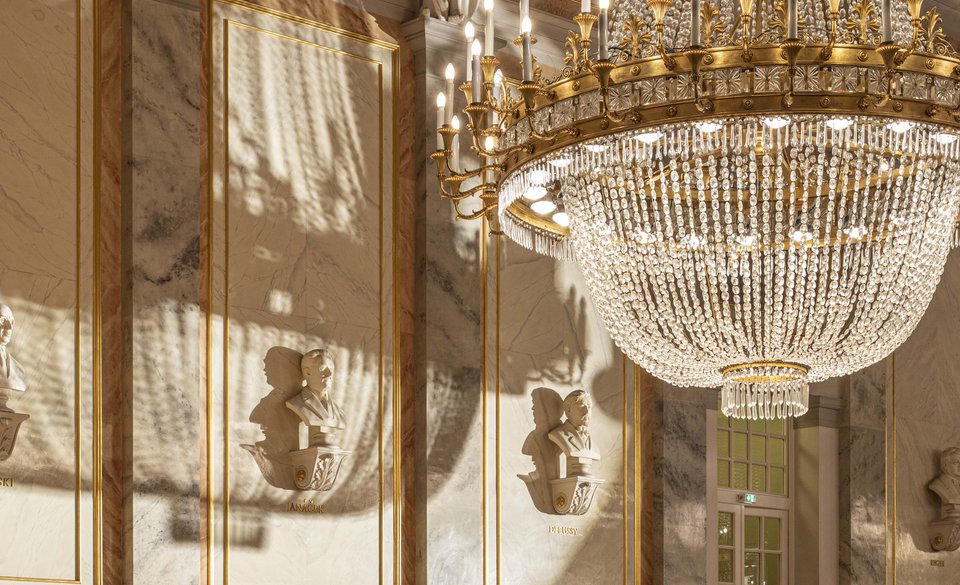
38 busts of famous composers look down from the walls in the Great Hall, among them Johann Sebastian Bach, George Frideric Handel, Béla Bartók and Dmitri Shostakovich.
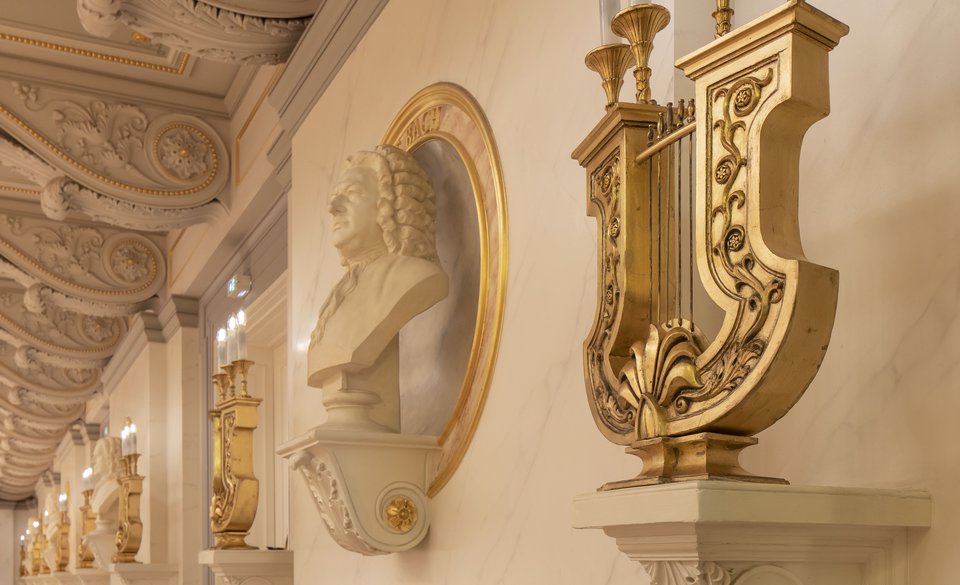
Numerous design elements are borrowed from classicism. The decorators of the reconstruction used forms and working methods of the Schinkel period here - this is especially true for the ceiling ornately decorated with paintings, stucco and gold decoration.
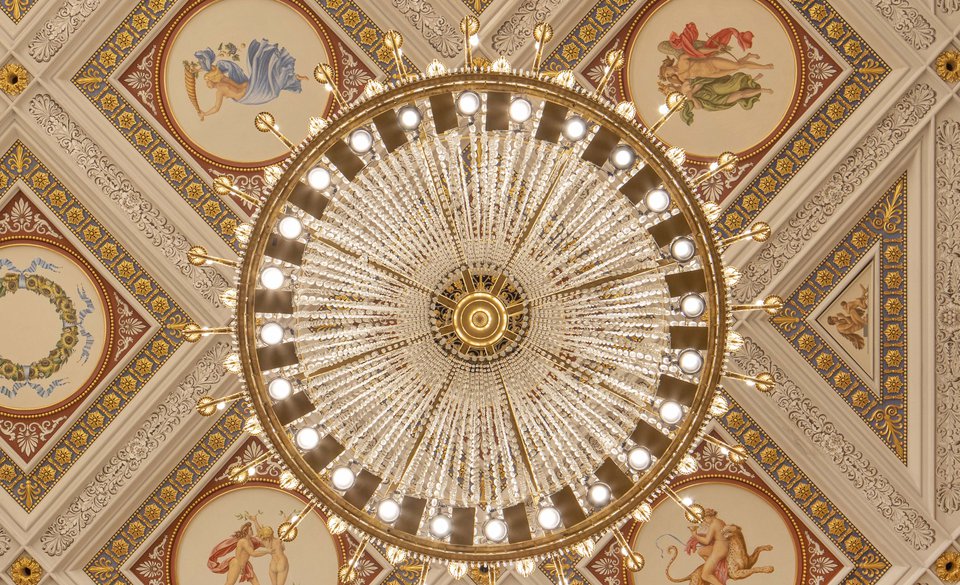
Since the opening of the building in 1984, the Great Hall has been adorned with a Dresden Jehmlich organ.
As one of the most representative organs in Berlin, it has 74 stops - distributed over four manuals and pedal - which enable a wide variety of tonal colors and a broad repertoire from baroque to modern. 5811 individual pipes can be operated in 256 set combinations in a setter system renewed in 1994.
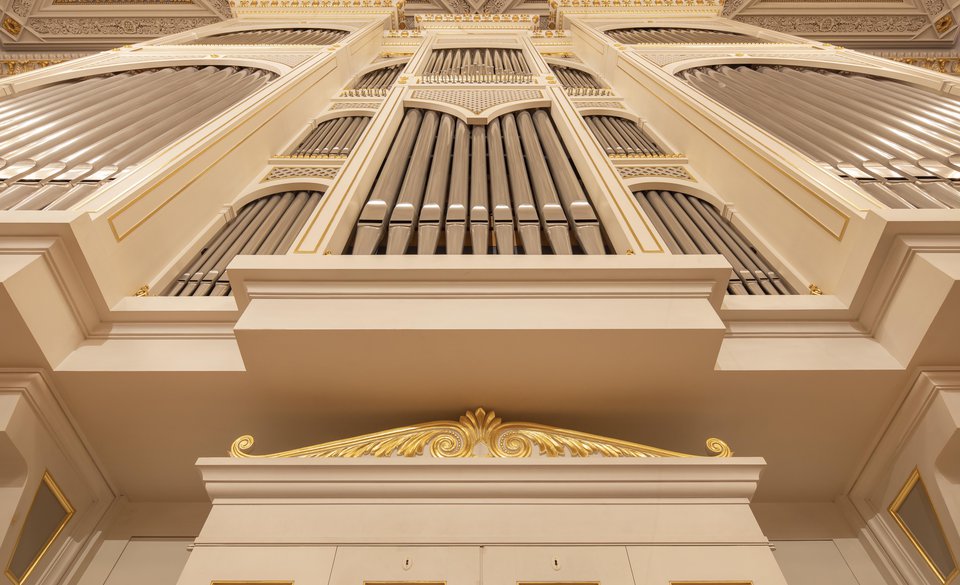
Just take a look around!
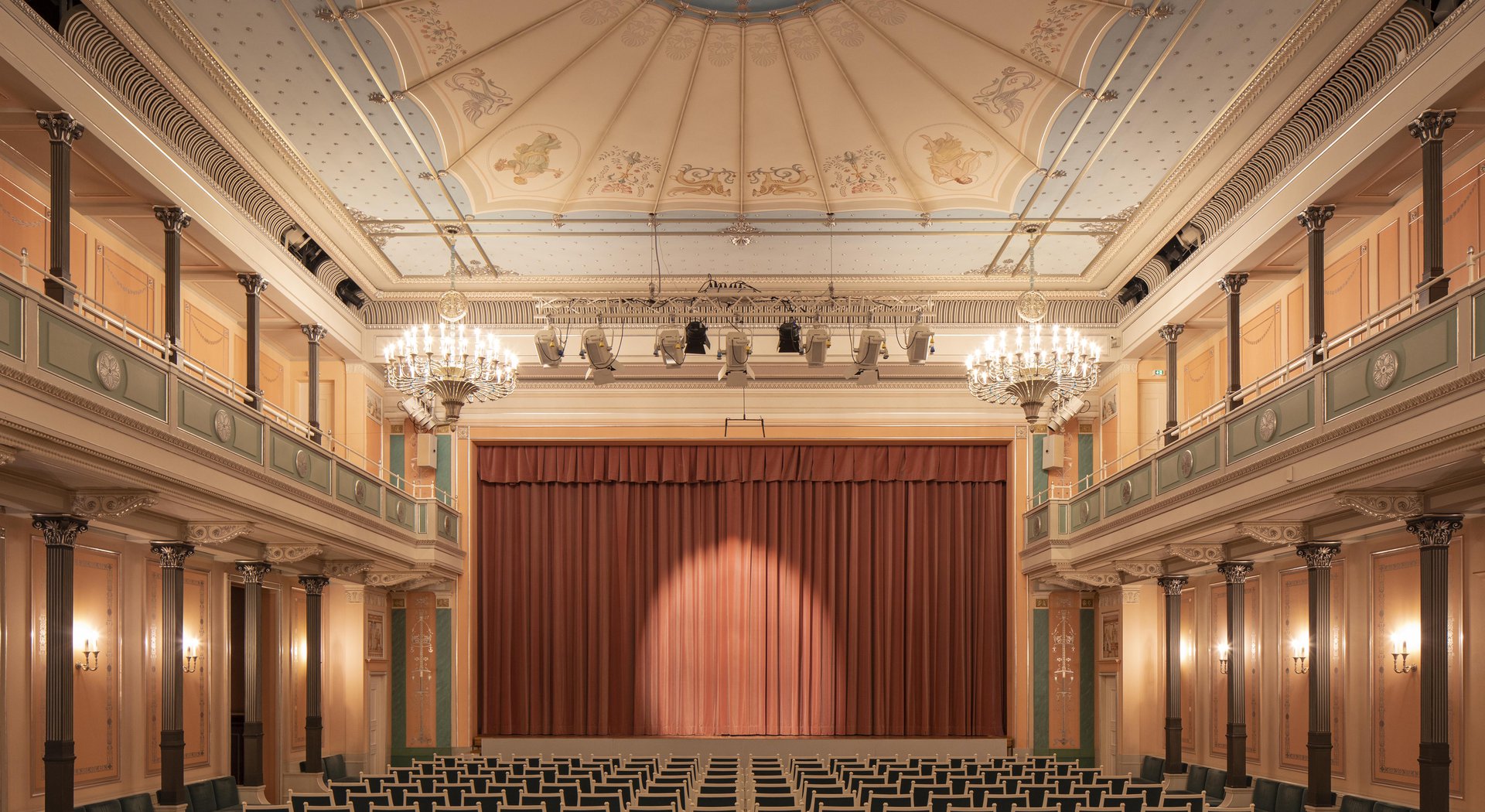
The Small Hall is acoustically ideally suited for chamber concerts - whether performed by in-house ensembles such as the Konzerthaus Quartet or the Horenstein Ensemble, or by numerous renowned guest artists who can be experienced on its stage every season.
As part of the education program, introductory events for school classes are regularly held here before heading to the Great Hall to listen to the Konzerthausorchester Berlin rehearse.
Architect Manfred Prasser was inspired by Schinkel's Charlottenhof Palace in Sanssouci for the Small Hall: "That's where I got the black, silver, green, this delicate rosé. And why? Well, the Chamber Music Hall is the chamber, that's something feminine, small, delicate, while the Great Hall is masculine, the opposite." So Karl Friedrich Schinkel, who designed and built the former Schauspielhaus in the 19th century, is actually a direct model in the hall design.
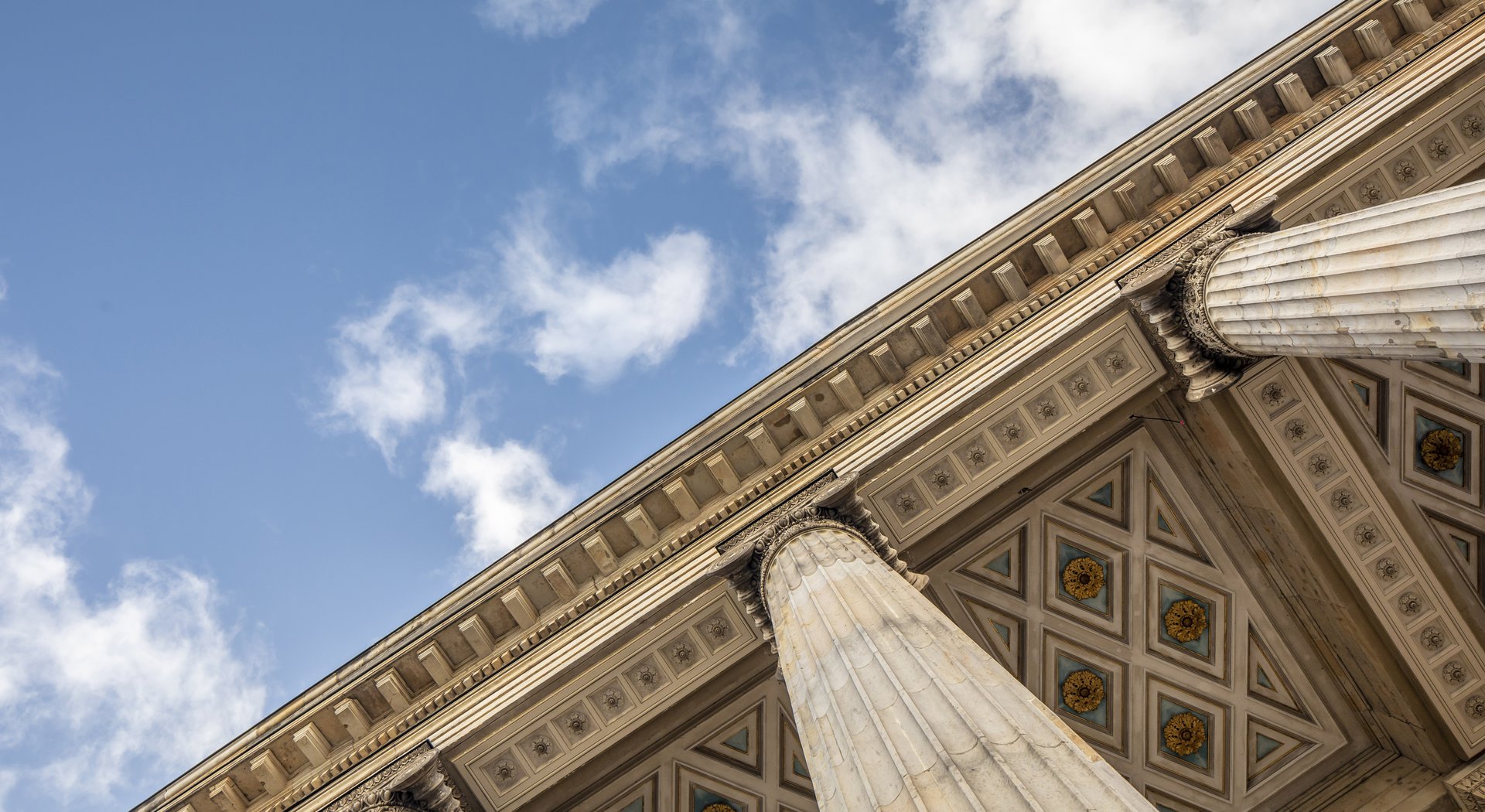
Here you can let your gaze wander from the foot of the stairway to Apollo, the god of the arts, in his chariot.
read more